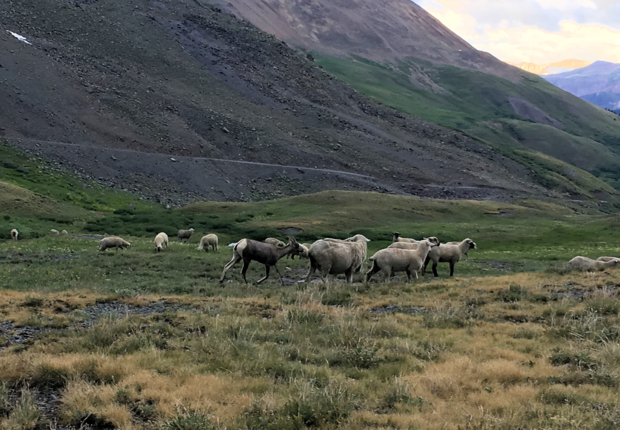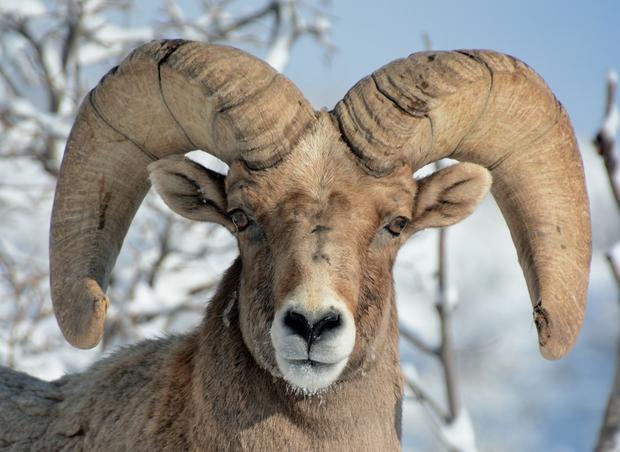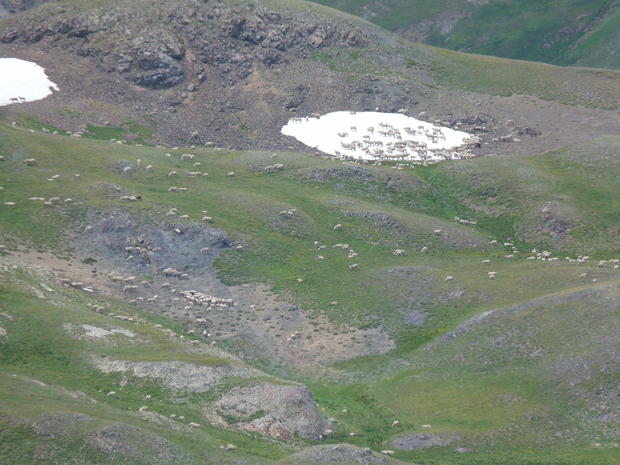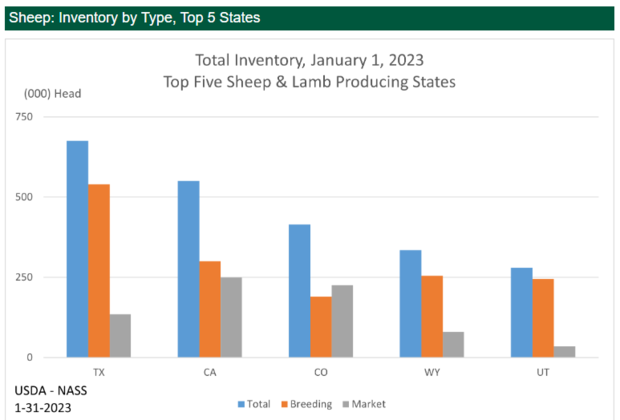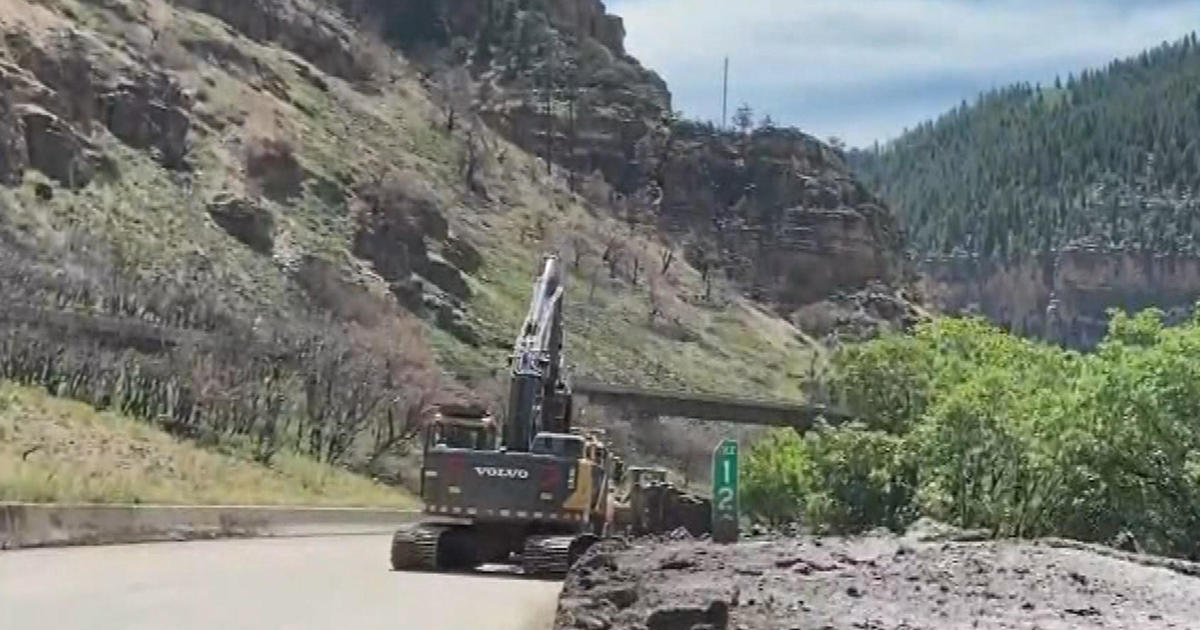Rancher, conservationists reach deal to preserve 100,000 acres for native Colorado bighorn herd
A wildlife conservation group recently agreed to pay a Colorado rancher to move his domestic sheep out of the high country in order to free up the territory for a herd of Rocky Mountain bighorn sheep.
The National Wildlife Federation announced the deal with the Etchart Sheep Ranch on Nov. 8.
In exchange for receiving a lump sum payment, the Etchart family will waive the family's grazing permits on 10 large, high-elevation allotments that span 101,676 acres in the San Juan mountain range near Silverton.
"This deal is the largest number of allotments that the Wildlife Conflict Resolution Program has included in a single agreement and by far the most important due to the location and because the allotments are continuous to one another," National Wildlife Federation spokesperson Cait Fallon told CBS News Colorado. "These allotments are either close to or overlap with one of Colorado's Tier 1 bighorn sheep herds - meaning these are genetically distinct remnants of the once large, wide-spread herds in Colorado. In other words, they are true native bighorn sheep and have been designated by Colorado Parks & Wildlife as one of the state's most important herds."
RELATED Lambs killed in Jackson County as Colorado prepares to reintroduce wolves into state
The monetary amount being paid to the ranch was not disclosed by either side.
Colorado's state animal (more specifically, mammal) built its reputation on spine-quaking, highlight-reel head-butting. The same intensity can be found in the conflict between ranchers and wildlife conservationists. The U.S. Bureau of Land Management was created, in fact, to administer the distribution of land between clashing public and private interests. Recent drought and evidence of over-grazing, along with the tightening agricultural market, have made relations more contentious.
So, a handshake between the groups is uncommon and fascinating - even if the motivations differ greatly, as they do here, and the experiences aren't exactly shared.
"I get that the NWF is doing this because they need to save bighorns," rancher Ernie Etchart said. "But this herd is doing quite well. The other side wants to portray that this herd is in peril."
RELATED Mountain goats, bighorn sheep caught eating pothole filler along road to Mt Evans
The primary reason for separating the wild and domestic herds is said to be disease. Bighorn sheep are susceptible to respiratory illnesses they contract after mingling with domestic sheep, wildlife managers say. Pneumonia often proves fatal, particularly to immature bighorns.
"The risk of respiratory disease to bighorn sheep is not speculative," stated Terry Meyers, Executive Director of the non-profit Rocky Mountain Bighorn Society, in an email to CBS News Colorado. "This herd most recently suffered an all-age die-off in the late 1980s that reduced the population to about 45 animals. The herd began to recover in the mid-2000s and reached an estimated 400 animals in 2011. Subsequently, the herd suffered several years of low lamb recruitment likely related to disease issues, and dropped to 340 in 2018. The herd has increased to about 390 animals now, but remains threatened even following this agreement between NWF and the Etchart family.
"Unfortunately," Meyers continued, "there are still 10 permitted Bureau of Land Management (BLM) and U.S. Forest Service (USFS) domestic sheep grazing allotments that directly overlap the occupied range of the San Juans West herd and continue to put the population in jeopardy."
Etchart, however, never saw the spread of the disease as an issue.
"We didn't see it, no," he said. "This is a (bighorn) herd that's been around domestic sheep for a hundred years."
Etchart believed the bighorns developed some degree of immunity over that time.
He also pointed out that the bighorn herd is viable enough that wildlife managers permit limited hunting of it.
But a 2012 Colorado Parks and Wildlife report on this particular San Juan West herd cited the introduction of pathogens borne by domestic livestock as the greatest barrier to the growth of Colorado bighorn populations.
"Population declines documented historically in (San Juan West) have been attributed to respiratory disease," it stated. "Sheep are highly gregarious by nature and are likely to interact with other sheep, wild or domestic, as they encounter one another. ... on-going and future management actions should focus on maintaining effective separation between the species."
The mountain ranges of Colorado's Western Slope have been shared between Rocky Mountain bighorn sheep and domestic wool- and lamb-producing sheep since the 1880s. Etchart's father, Martin, moved to Montrose area about 70 years ago. That's where Ernie Etchart continue to raise 3,700 ewes. During the summer season, he has moved truckloads of the sheep into the high country near Silverton. This allowed the vegetation in the lower (winter) grazing ranges to recover.
In recent years, Etchart's trucks have shared the road to the high country site with increasing recreational vehicle traffic. A higher number of hikers encountered his sheep herd, particularly in the areas of Stony Pass, Highland Mary Lake, California Gulch and Maggie Gulch. In some cases, the hikers' dogs chased sheep or fought with Etchart's "livestock protection" dogs. His sheep are also solitary, "not crazy" about interaction with humans, and encounters "put them on the move" and out of areas the sheepherders were trying to keep them in, Etchart said. There was also potential legal liability in some of these encounters.
This is what he calls "the business decision" part of giving up the grazing rights. Those 10 allotments represent about a quarter of his total grazing area. But his acquisition of allotments will partially make up for it. Though smaller, these new areas are closer to his Montrose ranch and aren't made up of rocky peaks, thus offering more usable acreage.
"It alleviates a lot of the impacts. It gives us a new start in another area," Etchart said. But "it was a difficult decision. That's a big change. They're not making more grazing allotments. We're gaining population and losing land and production in the future. That could become a problem."
RELATED Hit-and-run driver kills 38 sheep near Monte Vista (2015)
Meyers, the executive director of the Rocky Mountain Bighorn Society, says the agreement between Etchart and the NWF is the largest ever negotiated to the benefit of bighorn sheep.
"The grazing permit waiver agreement negotiated between NWF and the Etchart family is an important step towards securing the future of the San Juans West bighorn sheep herd, which is identified as one of the most valuable bighorn sheep herds in the state. It is an endemic herd that has received few augmentations via animals introduced from other sources, and its range includes some of the most expansive, high quality, and well-connected bighorn sheep habitat in the state. The Rocky Mountain Bighorn Society welcomed the opportunity to contribute significant funds to NWF to make this deal happen."
But he cautioned there is much more to be done.
RELATED Mountain lions thwart planned relocation of bighorn sheep (2021)
"I remain dismayed at the lack of action on the part of the federal land management agencies. Federal grazing is an agency-permitted privilege, not a right," he said. "We should not be relying upon third party NGOs to negotiate settlements and raise hundreds of thousands of dollars in private funds to protect our bighorn sheep herds."
The 10 allotments previously leased by Etchart will go vacant. The rights to them will still be maintained by the BLM and Forest Service.
Meyers noted there are still as many as 10 other active grazing allotments which overlap the San Juan West herd's range.
Etchart believed any future settlements between ranchers, hunters, recreational users and wildlife conservationists for this area's bighorn herd - and perhaps others anywhere in the state - will happen through litigation.
Colorado's current bighorn population is estimated to be 7,000. According to the NWF, that number is about 10 percent of its historical size.
CPW has conducted more than 100 transplant missions, bringing in new animals from out of state to replenish weakened Colorado herds. Eighteen herds have never received transplants and retain their native bloodlines, per CPW.
Conversely, Colorado's sheep and lamb industry remains one of the strongest in the nation. This, despite having fewer than a half million sheep and goats statewide when it boasted roughly two million sheep in the 1880s.



